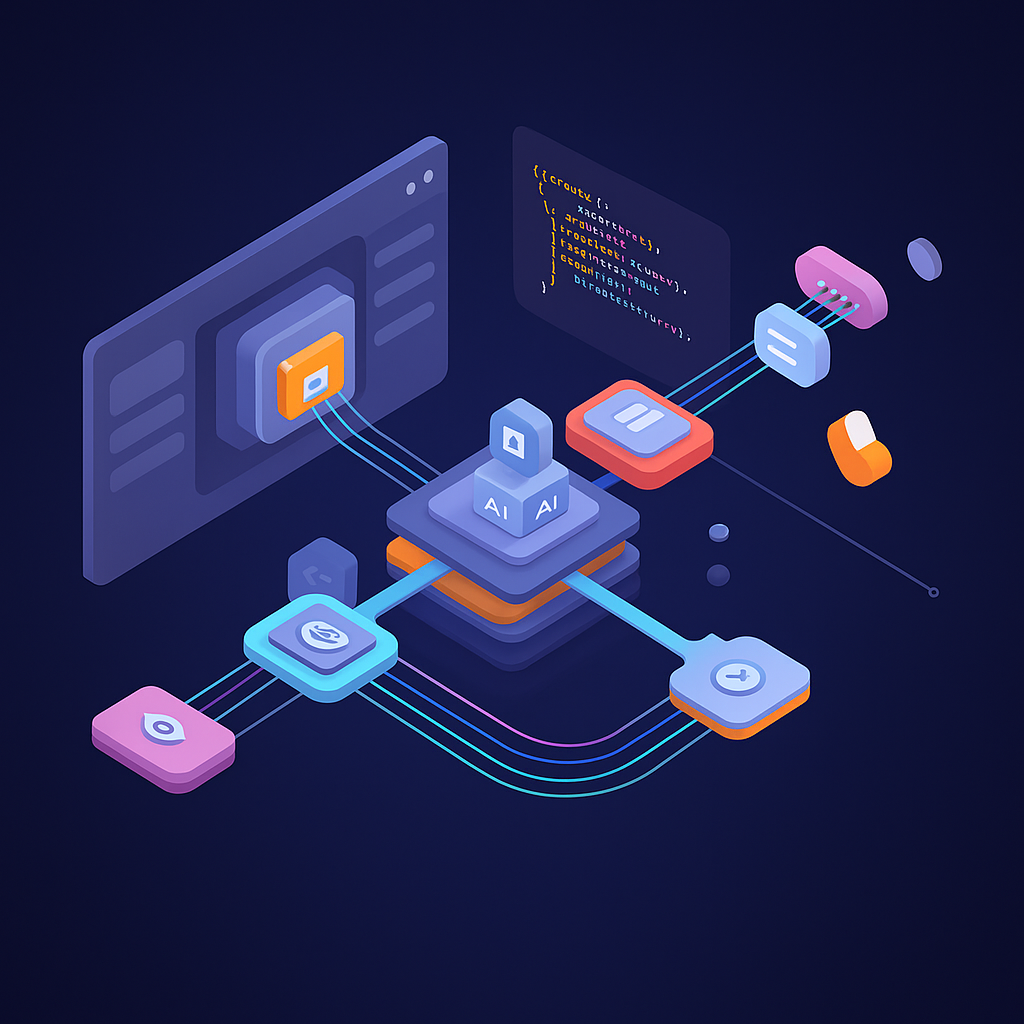Understanding n8n: A Low-Code Workflow Automation Tool
1. What is n8n?
n8n is a source-available, low-code workflow automation platform designed to seamlessly integrate various applications, services, and even Large Language Models (LLMs). With over 1,000 integrations — including popular tools like Google Workspace, Slack, WhatsApp, and Notion — n8n enables users to construct automated workflows that simplify repetitive tasks.
At its core, n8n allows users to leverage AI capabilities in conjunction with business process automation. With n8n, you can move beyond mere rule-based automation; you can create systems that interpret context, reason, and adapt their responses based on specific conditions. This is especially useful for developers in the microSaaS community, who often use n8n to rapidly prototype and deploy complex, AI-driven services without the need for extensive infrastructure.
2. Step-by-Step: Build Powerful Workflows
Here’s a practical look at three powerful workflows you can build for both personal and professional use:
- Daily Briefing Personal Assistant
- Customer Support Assistant
- Appointment Scheduler Assistant
When working with n8n, you have two main hosting options:
- n8n Cloud: This option provides a 14-day free trial, which is the simplest way to start without installation hassles.
- Self-hosting: You manage your own infrastructure, with a free Community Edition that comes with certain limitations.
For new users, starting with the n8n Cloud trial will allow you to quickly build and experiment with these workflows without hitting technical roadblocks.
2.1 Daily Briefing Personal Assistant
Let’s create a personal assistant workflow designed to deliver a daily briefing every morning at 8 a.m.. This assistant will gather critical information to get your day started:
- Fetch news about AI from the previous day using Google Search.
- Check your Google Calendar events for the day.
- Retrieve unread emails from Gmail.
- Summarize all the gathered information.
- Send an organized message to your Slack channel.
To set this up, log into n8n, create a workflow, and initiate it using the Schedule Trigger option. Choose to run it every day at 8 a.m..
You’ll then add additional steps to process the news, calendar events, unread emails, and finally, compile this data to send to Slack.
2.1.1 Set Up Chat Model
For this workflow, select an AI model like Gemini for summarizing your news articles. Configure the necessary parameters, including the API key and model settings.
This setup allows your AI agent to analyze the data efficiently, following your daily routine.
2.1.2 Tools Setup
Next, integrate:
- Google Calendar: Retrieve your calendar events for the day. Select the relevant calendar and ensure to specify the appropriate time parameters to fetch today’s events.
- Gmail: Configure this to get unread emails.
- SerpAPI: Utilize this for Google search results to find the latest AI news, which will be included in your summary.
2.1.3 Setting Up the AI Agent
Define an AI agent to process the collected data, outlining specific instructions for completion. This includes checking calendar events, summarizing emails, and sourcing news articles.
Your AI’s prompt should include detailed instructions on how to format the response for Slack, such as including emoji for clarity and summarized responses.
2.2 Customer Support Assistant
Moving on to customer support automation, let’s develop a product feedback system that streamlines customer interactions:
- Receive form submissions with client feedback.
- Classify sentiment via a sentiment analysis tool.
- Save all feedback in a Google Sheets spreadsheet.
- Trigger an AI agent for negative feedback to generate personalized responses, potentially offering a discount.
Start by creating a new workflow that uses on form submission as the trigger. You can set up your form attributes such as Name, Email, and Feedback.
2.2.1 Set Up Sentiment Analysis
For feedback analysis, add a Sentiment Analysis node and classify responses into Positive, Neutral, or Negative. This allows you to tailor responses as necessary based on perceived customer satisfaction.
2.3 Appointment Scheduler Assistant
As a final example, let’s create an Appointment Booking Assistant specifically for a nutritionist. This system will help clients schedule appointments with critical features such as:
- Collecting initial information from clients.
- Checking available slots in Google Calendar.
- Sending confirmation emails.
- Gathering feedback after the interaction.
To start, set the trigger to On Chat Message and incorporate memory for better client interaction.
3. Prompt Injection
When building workflows that involve user interaction, it’s vital to consider the risk of prompt injection. This phenomenon occurs when users attempt to manipulate the AI’s behavior through crafted prompts.
To mitigate this risk, implement security measures like restricting user input length, validating user submissions, and logging actions to monitor for suspicious activity.
4. Similar Tools
For those exploring alternatives to n8n, it’s essential to evaluate other workflow automation platforms. Tools like Huginn, Activepieces, or Zapier each have their pros and cons. Depending on your needs – whether simplicity, open-source options, or robust integrations – select a tool that aligns with your goals.
n8n offers an accessible entry point for those looking to leverage workflow automation, especially with AI integrations, making it valuable for both beginners and experienced developers alike.





